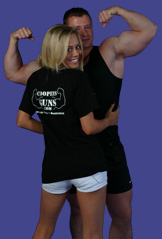Achilles Tendon Rupture
What it Effects
- Effects the achilles tendon which connects the gastrocnemius and the soleus muscles of the lower leg to the heal bone (calcaneous).
Who it Effects
- Common injury sustained by footballers and other sports players.
- Can effect anyone with tight or weak calf muscles.
Mechanism of Injury
- The exact cause of rupture of the Achilles tendon is not known.
- As with Achilles tendonitis, tight or weak calf muscles may contribute to the potential for a rupture.
- If this muscle is weak and becomes fatigued, it will tighten and shorten.
- Overuse also causes muscle fatigue.
- The bottom line with Achilles tendonitis is that the more fatigued the calf muscles are (regardless if it is from weakness or overuse), the shorter and tighter they will become. This tightness will increase the stress on the Achilles tendon.
- A rupture usually occurs when there is force on the tendon that is greater than the tensile strength of the tendon.
- If the foot is dorsiflexed while there is a forward motion of the lower leg (tibia) over the foot as the calf muscles are contracting, a rupture may occur.
- Most ruptures occur from a combination of a forceful stretch of the tendon with a contraction of the calf muscles.
Signs and Symptoms
- A classic sign of an Achilles tendon rupture is an athlete looking over his shoulder to see who or what has just hit their ankle.
- There is often an audible “pop.”
- There is little warning, and often the pain (or lack thereof) is out of proportion to the extreme nature of the injury.
- The injured patient will not be able to lift up onto his toes; although he may be able to point his toes while not weight bearing.
Treatment
- A completely ruptured Achilles tendon will require surgical repair, followed with up to 12 weeks in a series of casts.
- Partial tears may be treated with casting for up to 12 weeks alone, and sometimes are treated with surgery and casting.
- A heel lift is usually used for 6 months to one year following removal of the cast.
- Rehabilitation to regain flexibility and then to regain muscle strength are also instituted following removal of the cast.
- Proprioceptive exercises are an essential part of the rehabilitation process.
- As with all sports related injuries, a visit to a physician for a proper diagnosis and treatment plan is essential.
Additional Information
- The Achilles tendon is the largest, as well as, most exposed, tendon in the body.
- It joins the gastrocnemius and the soleus muscles of the lower leg.
- The gastrocnemius muscle crosses the knee, the ankle, and the subtalar joint.
- The movement of these joints creates pressure and tension in the Achilles tendon, and often is the source of Achilles tendon problems.
- Like ligaments, tendons are strong, but they are not particularly flexible.
- They will stretch only so far before they wear, tear or rupture.
If you have any questions, please use the comment form below or post a thread on the forums.
